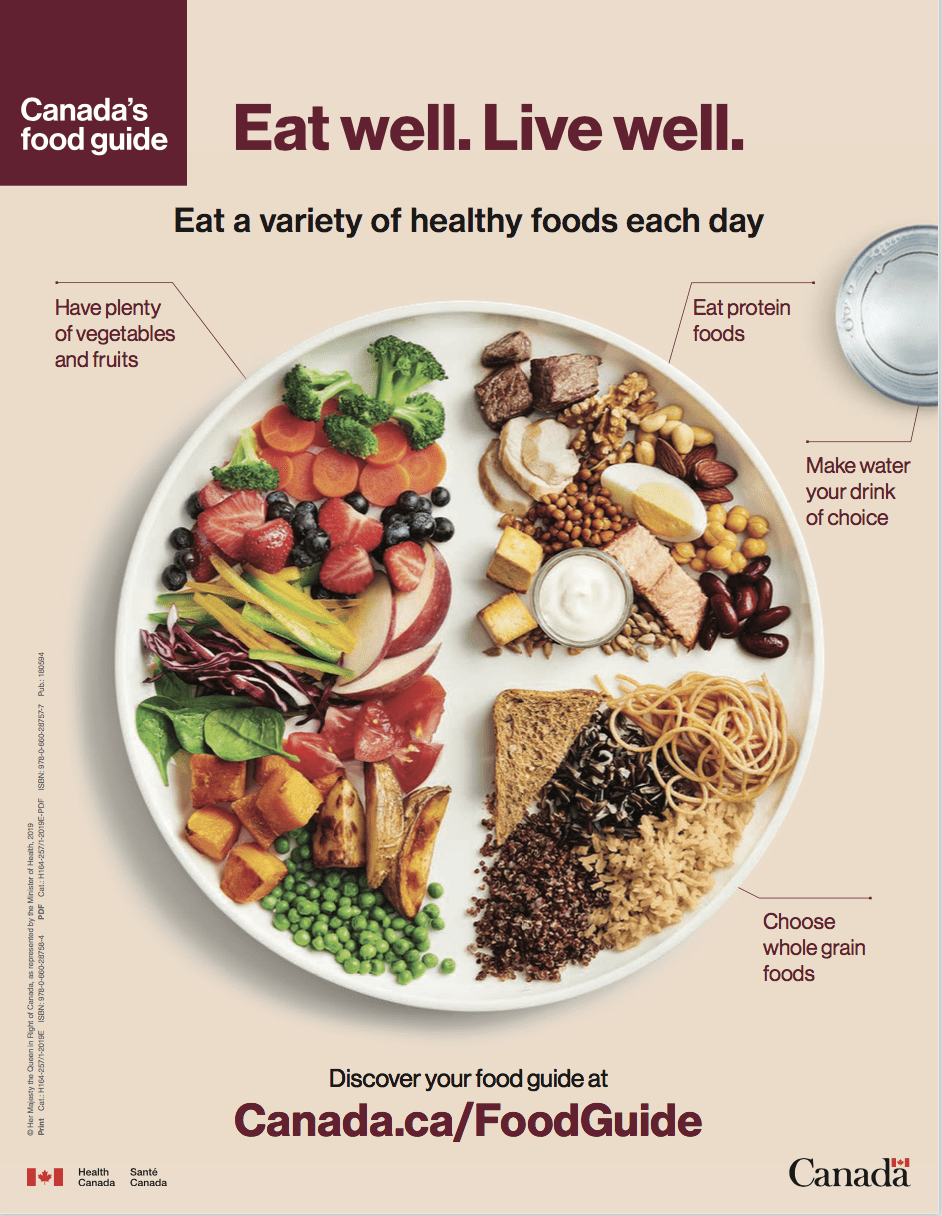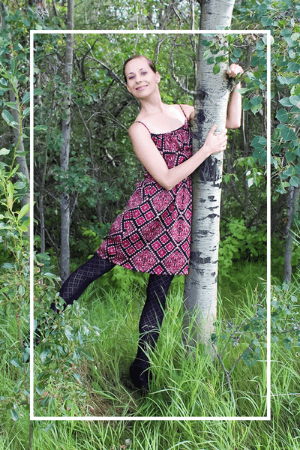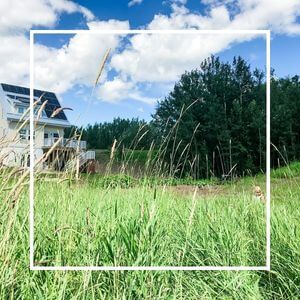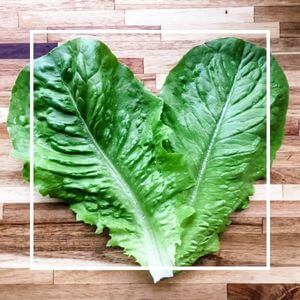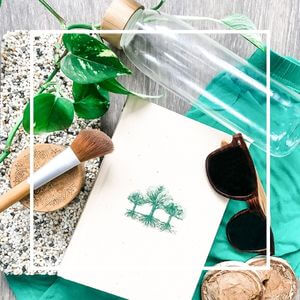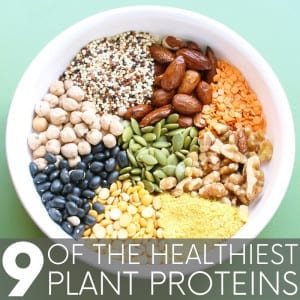 The Canadian government recently overhauled its food guide – getting rid of the long-standing “four food groups” and offering a clear message. Eat more plants. Eat less dairy and meat.
The Canadian government recently overhauled its food guide – getting rid of the long-standing “four food groups” and offering a clear message. Eat more plants. Eat less dairy and meat.
Not only am I happy about this change because it confirms my family and I are already eating well, but I am absolutely thrilled that it encourages others to eat sustainably. (If you would like to learn more about plant-protein vs animal protein diets and their link to the environment you can watch this video.)
You may not be from Canada, but your country likely has their own healthy eating guidelines. These are the recommendations followed by most healthcare professionals and that are taught in schools. My older daughter is in kindergarten and her teacher has been great about teaching the students that protein is so much more than meat, but there are still a ton of people out there who think you need to eat animal products to be healthy – and that just isn’t true!
The updated guide has inspired me to talk about nine of the best plant protein foods. I eat all of these food items on a regular basis. Not only are they meat and dairy free (and thus vegan protein sources), but they’re also gluten and soy free. Because, while I still consume gluten and soy, I know many people have allergies and many others are suspicious of soy products. I swear, properly prepared tofu tastes amazing! But I get it. It seems weird.
Thankfully, you can just eat one of these nine plant-based proteins instead!
Note that this post contains affiliate links, meaning if you click on a link and make a purchase a small percentage of the sale goes to yours truly. Please know that I only link to products that are good for the earth, good for the soul, or both!
I gathered all the data found below via Cronometer, which is an online food tracker that provides information on over 60 micronutrients. If you follow this link and sign up (for free!) I get a small referral fee from the company, but you still don’t have to pay anything. Double win!
Also, I based the recommended daily amount of protein on the average height of a Canadian adult male (5′-9″) and a healthy weight for that height (165 lbs). This is to show that even someone who requires a significant amount of protein (123.3 grams per day) can easily meet their needs eating a plant-based diet.
Pumpkin Seeds
Protein Amount: 35.2 grams per 1 cup unsalted pumpkin seeds (29% of the recommended daily amount).
Other Health Benefits: 1 cup of unsalted pumpkin seeds also contains 7.7 grams of fibre, 23.3 grams of omega-6 fats and is high in copper, iron, magnesium, manganese, phosphorus and zinc.
Meal Ideas: Sprinkle pumpkin seeds on top of a salad (with homemade dressing!) or mix it with some granola.
Almonds
Protein Amount: 27.5 grams per 1 cup of chopped raw almonds (22% of the recommended daily amount).
Other Health Benefits: 1 cup of chopped raw almonds also contains 16.2 grams of fibre, 16.0 grams of omega-6 fats and is high in vitamin B2, vitamin E, copper, iron, magnesium, manganese and phosphorus.
Meal Ideas: Eat whole almonds as a snack or sprinkle shaved almonds on a vegetable stirfy.
Lentils
Protein Amount: 17.9 grams per 1 cup of cooked lentils (14% of the recommended daily amount).
Other Health Benefits: 1 cup of cooked lentils also contains 11.6 grams of fibre and is high in folate, copper, iron and phosphorus.
Meal Ideas: Use cooked red lentils in a vegan “meat-sauce” or stuff them into halved peppers and bake in the oven.
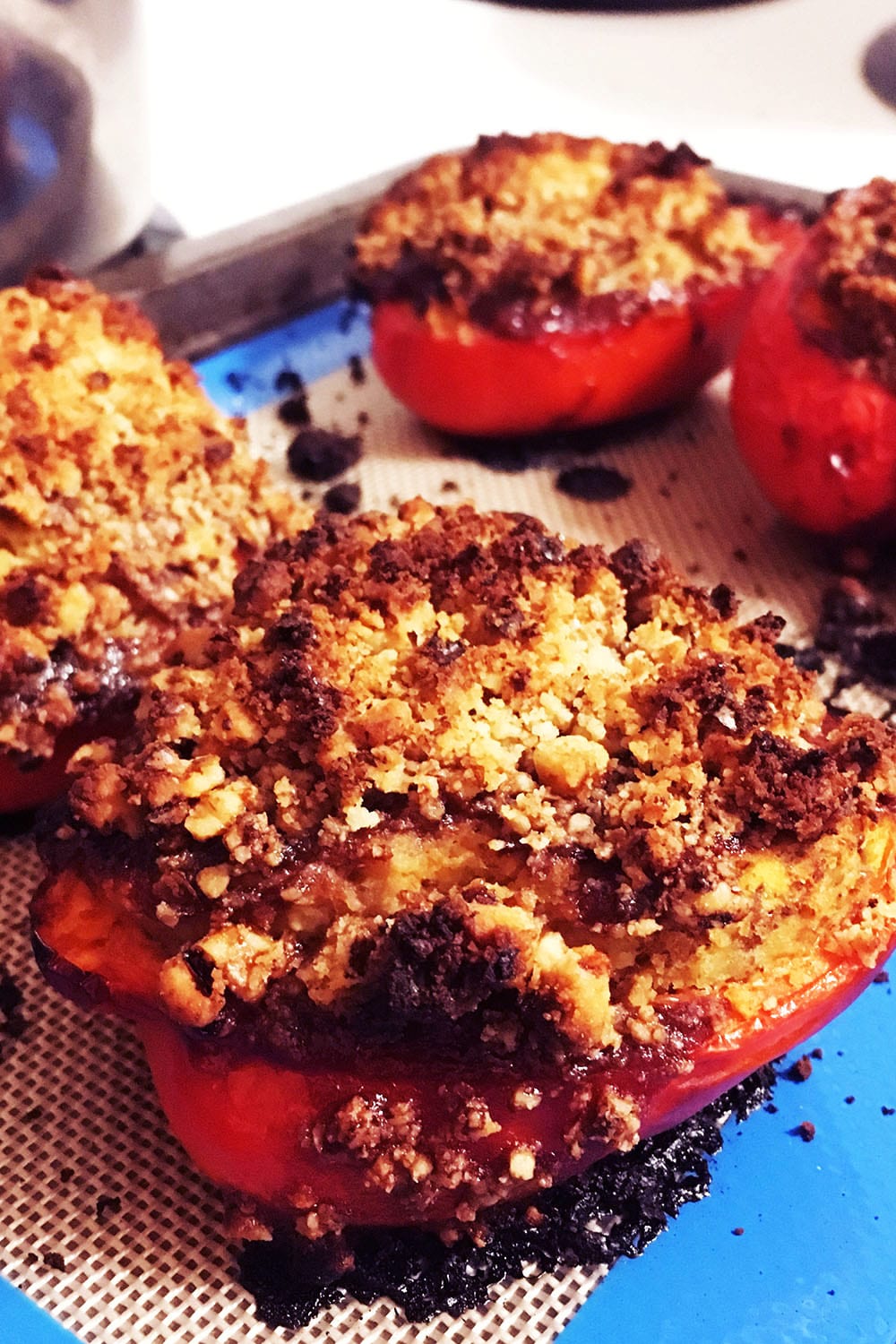
Walnuts
Protein Amount: 17.8 grams per 1 cup of chopped walnuts (14% of the recommended daily amount).
Other Health Benefits: 1 cup of chopped walnuts also contains 7.8 grams of fibre, 10.6 grams of omega-3 and 44.6 grams omega-6 fats and is high in copper, manganese and phosphorus.
Meal Ideas: Walnuts are another tasty snack nut and also make a great breading substitute when crushed (see above red lentil stuffed peppers with walnut breading).
Nutritional Yeast
Protein Amount: 16.8 grams per 1 cup Bob’s Red Mill Nutritional Yeast (14% of the recommended daily amount).
Other Health Benefits: 1 cup Bob’s Red Mill nutritional yeast also contains 6.3 grams of fibre and is high in vitamins B1, B2, B3, B6 and B12 as well as minerals like phosphorus and zinc.
Meal Ideas: Sprinkle nutritional yeast (aka “nooch”) on top of pasta as a parmesan substitute or add to vegan “cheese” dishes for flavour.
Split Peas
Protein Amount: 16.3 grams per 1 cup of cooked yellow or green split peas (13% of the recommended daily amount).
Other Health Benefits: 1 cup of cooked yellow or green split peas also contains 20.9 grams of fibre.
Meal Ideas: Split pea soup in always so yummy and comforting. Split peas also go well mixed with rice or other grains.
Black Beans
Protein Amount: 15.2 grams per 1 cup of cooked black beans (13% of the recommended daily amount).
Other Health Benefits: 1 cup of cooked black beans also contains 15 grams of fibre.
Meal Ideas: My family loves black bean fajitas and these vegan black bean burgers from Hummusapein are to die for. (But don’t die. Just eat them.)
Chickpeas
Protein Amount: 14.5 grams per 1 cup of boiled unsalted chickpeas (12% of the recommended daily amount).
Other Health Benefits: 1 cup of boiled unsalted chickpeas also contains 12.5 grams of fibre and is high in folate, copper, iron and manganese.
Meal Ideas: Try my Baked Balsamic Chickpeas, which you can toss on top of pasta or salad, serve with potatoes and vegan gravy or eat on their own as a snack.
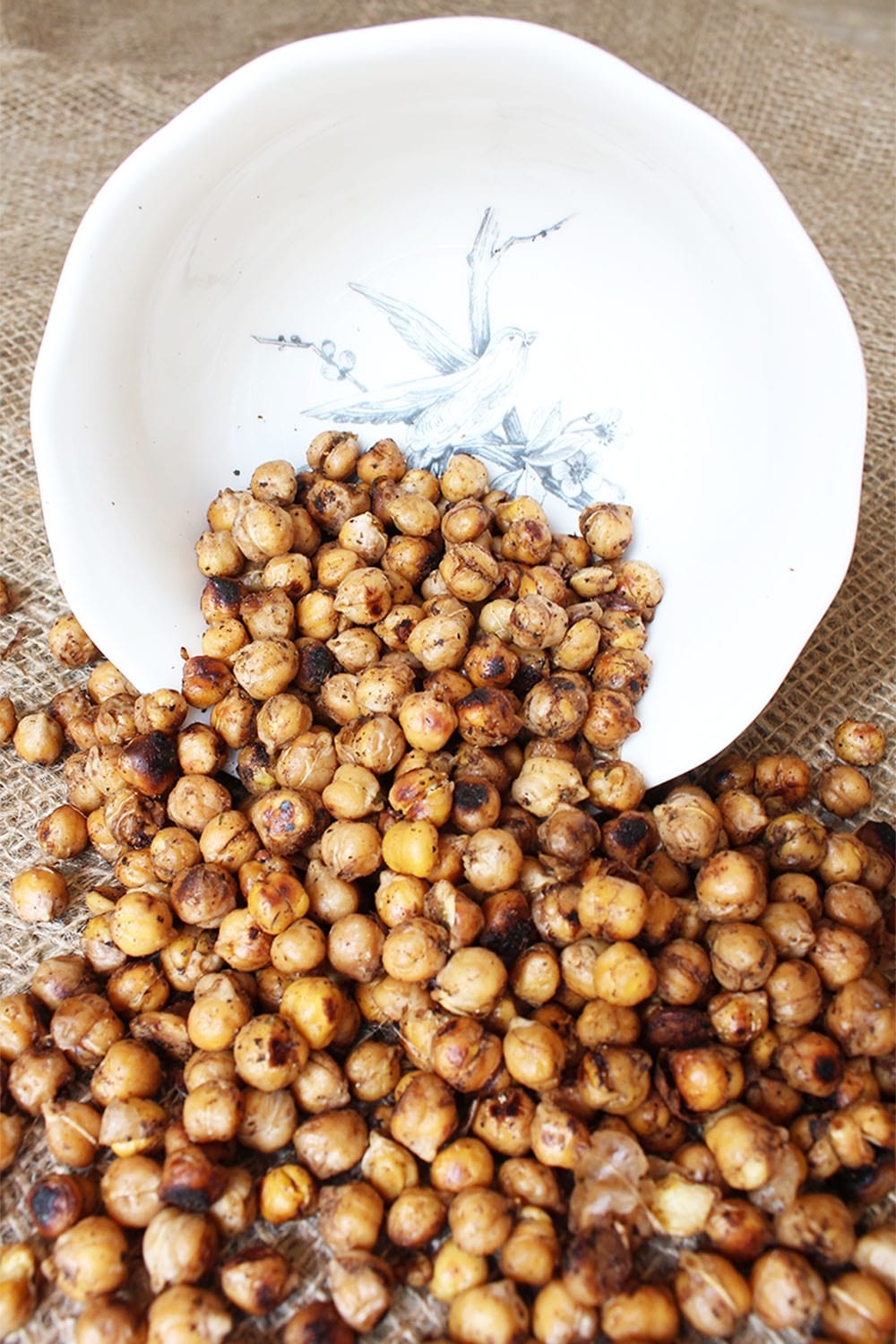
Quinoa
Protein Amount: 8.1 grams per 1 cup of cooked quinoa (7% of the recommended daily amount).
Other Health Benefits: 1 cup of cooked quinoa also contains 5.2 grams of fibre and is high in manganese.
Meal Ideas: My favourite way to eat quinoa is cold in a salad, but it also tastes delish in a homemade soup.
Honorable Mentions
A few more of my favourite plant-based proteins include:
- Green peas (7.8 grams/cup)
- Spinach (5.3 grams/cup)
- Avocado (5.1 grams/cup)
- Corn (3.8 grams/cup)
- Broccoli (2.6 grams/cup)
- And – of course… tofu! With a whopping 33.4 grams/cup, tofu is one of the highest plant-based sources of protein and is extremely versatile. Check out my 10-Minute Vegan Tofu-Scramble if you need further persuasion.
Yeah… I have a lot of favourites. I hope I’ve helped you discover/rediscover a few of your own!
LET’S BE TREEHUGGERS TOGETHER!
Subscribe to have weekly treehugger tips + the latest Of Houses and Trees posts delivered directly to your inbox!
OH, AND LET’S BE FRIENDS TOO…
PIN ME!
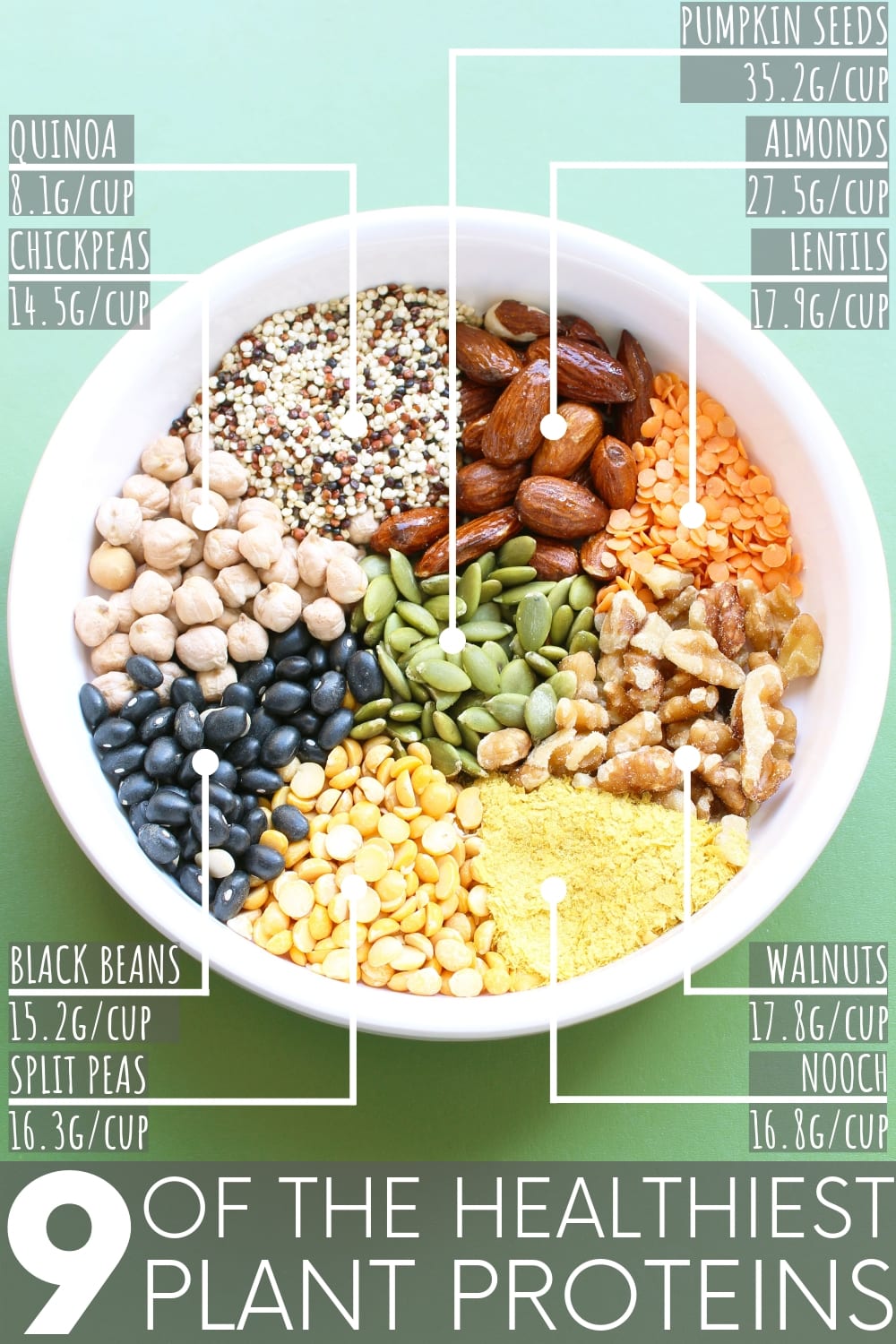
Posted on January 29, 2019
Former architectural technologist. Current treehugger.
I’m here to help you green your home – and your life.
Subscribe to the Of Houses and Trees monthly newsletter and I’ll send you my FREE list of “The 8 Best Places to Buy Eco-Conscious Decor Online.”
What on earth is sustainable design? Learn all about this eco-focused design method and read the latest posts about green architecture, interior design and decor.
Sustainable living is more than just a thing treehuggers talk about. It’s about making conscious choices everyday. Read the latest posts on living with the planet’s wellbeing always in mind.
Visit the Of Houses and Trees sustainable product directory and support brands trying to make a difference in the world.
Find out more about our 40 acres of land in Parkland County, Alberta and the sustainable home we built amongst the trees.
Need help creating the home of your dreams? Care about the planet? You’ve come to the right place! check out my affordable, sustainable e-design services.
Having a had time choosing paint colours? I’ve got you – and your walls – covered with an interior paint palette sure to compliment your home.
Have questions about creating an eco-conscious home? Go ahead – ask me! Sign up for one of my free online interior design consultations and ask me anything you want.

